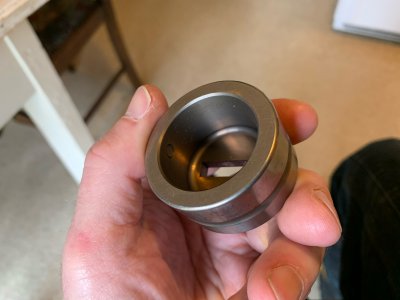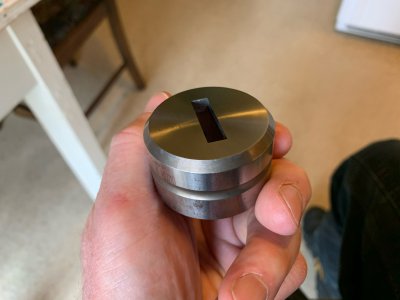- Joined
- Mar 26, 2018
- Messages
- 2,725
As the title suggests, I’m looking for something to use to bridge my high point while measuring scraping. I am currently using a 0.2” thick standard gage block, but I find the cross section to be a bit small at times, especially during roughing.
I’ve seen some of the guys on YouTube using shop made round blocks, knurled on the rim, hardened, and precision lapped for flatness and parallelism. Are these available commercially or can anyone think of something bigger than a gage block but smaller than a 1-2-3 block that is flat and parallel on opposing sides?
Without any good reason, I think it would be cool to have one that was a circle with a contact area of 1 in^2. This would be roughly a 1.13” diameter.
I’ve seen some of the guys on YouTube using shop made round blocks, knurled on the rim, hardened, and precision lapped for flatness and parallelism. Are these available commercially or can anyone think of something bigger than a gage block but smaller than a 1-2-3 block that is flat and parallel on opposing sides?
Without any good reason, I think it would be cool to have one that was a circle with a contact area of 1 in^2. This would be roughly a 1.13” diameter.


